
Illustrating Earth's Biomes
After completing a series of scientific illustrations depicting the water, nitrogen, and rock cycle I decided to get more inspiration for more science illustrations. That's when I came across diagrams depicting the “Biome Pyramid” in which the biomes of the world are placed on a pyramid with one arrow pointing from dry to wet and another from hot to cool. This greatly inspired me to illustrate the most basic biomes we see on Earth and assemble them into a similar pyramid as a poster. I gathered my references for each biome type and began to conceptualize what I would include in each of these small illustrations making sure from a quick glance you can tell the temperature and humidity with ease. Around this time I was working on my own biomes for my world Terra so I was ready to illustrate some real life biomes for a change.
Tropical Biomes
The tropical zone, located along Earth’s equator, receives the most amount of Sun throughout the year which means this region hosts the highest temperatures on the planet. Instead of seasonal variance seen in regions further from the equator, the tropics don’t see a drastic temperature variance but instead a precipitation variance creating dry and wet seasons. The dry season can lower/dry up rivers, while the wet season can flood the landscape as most of its rainfall occurs during this season.
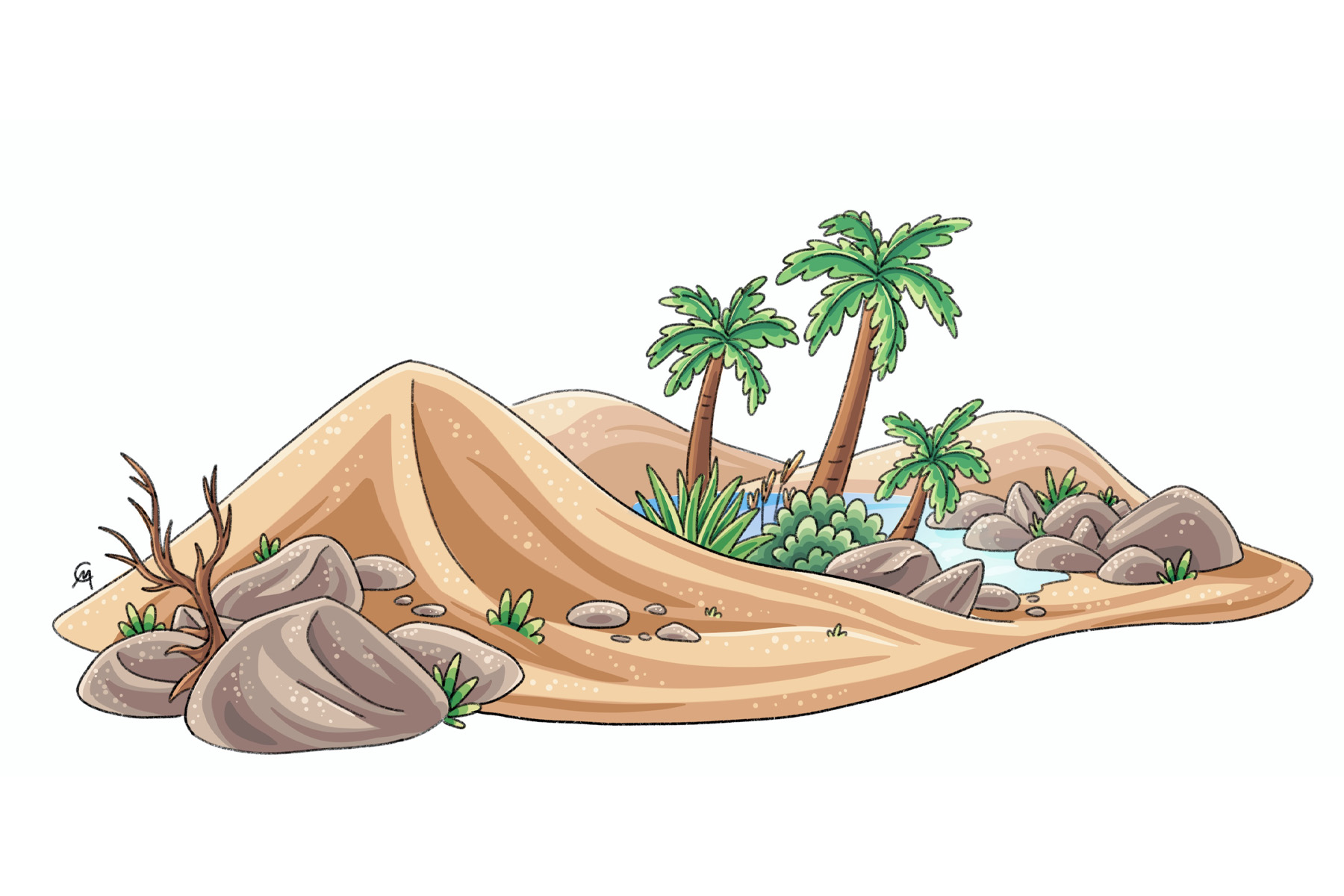 The tropical desert, or hot desert is a biome known for extremely hot temperatures, with unpredictable yet low amounts of rainfalls. These deserts are covered with sand dunes and exposed rocks, lacking rooted vegetation which leads to wind erosion and mineral transportation across vast areas. Despite the harsh climate, small pockets of lakes and ponds can form in shallow depressions that can allow migrating plants to flourish in an otherwise extreme landscape. I took inspiration from the mighty Sahara Desert for this illustration, with its sprawling large sand dunes, scattered oasis with palm trees that act as a tiny paradise within the hellish landscape. Deserts may seem like a wasteland on its surface, but it's home to unique ecosystems that harbor plants and animals adapted for its extremes.
The tropical desert, or hot desert is a biome known for extremely hot temperatures, with unpredictable yet low amounts of rainfalls. These deserts are covered with sand dunes and exposed rocks, lacking rooted vegetation which leads to wind erosion and mineral transportation across vast areas. Despite the harsh climate, small pockets of lakes and ponds can form in shallow depressions that can allow migrating plants to flourish in an otherwise extreme landscape. I took inspiration from the mighty Sahara Desert for this illustration, with its sprawling large sand dunes, scattered oasis with palm trees that act as a tiny paradise within the hellish landscape. Deserts may seem like a wasteland on its surface, but it's home to unique ecosystems that harbor plants and animals adapted for its extremes.
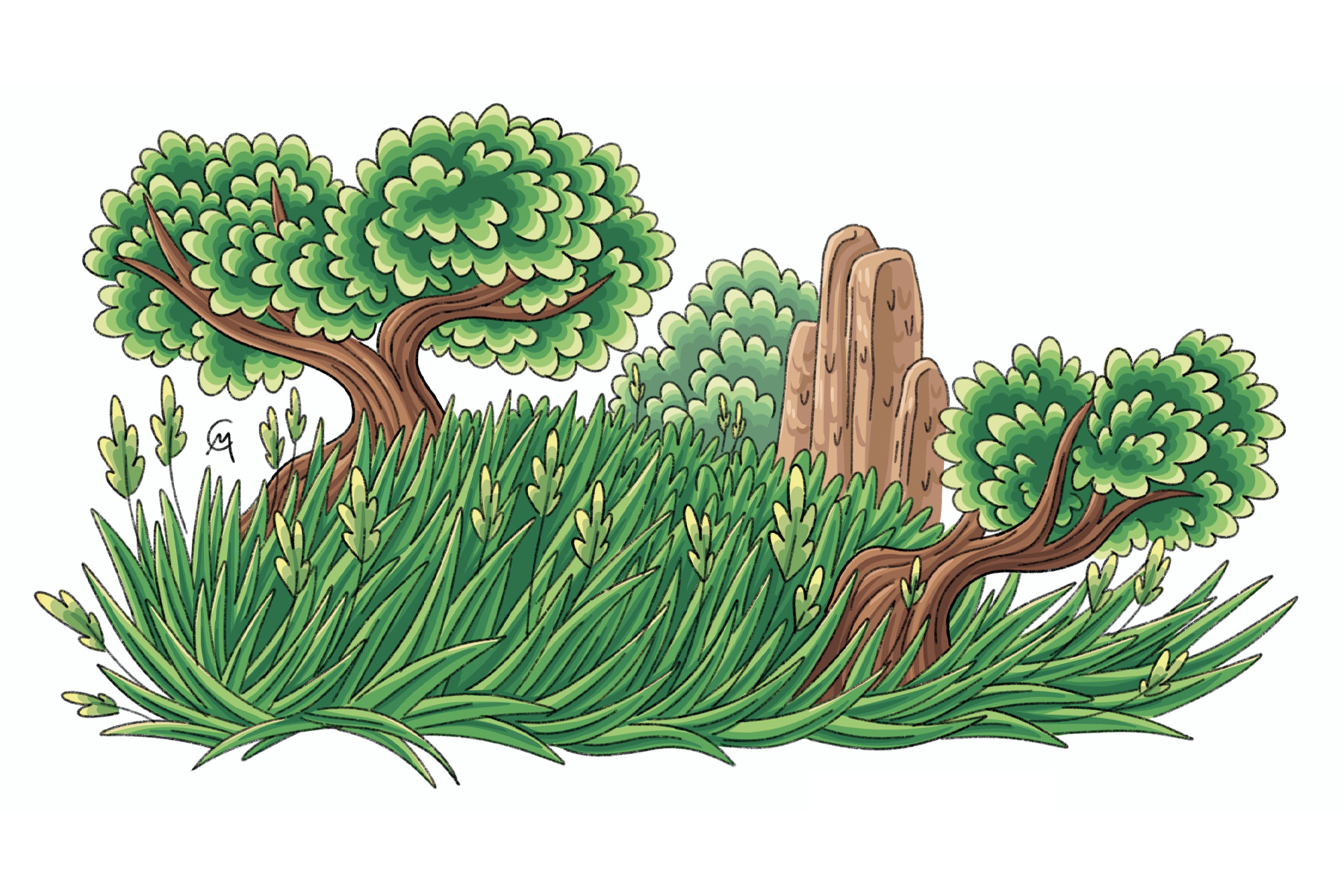 The tropical grassland, or savanna is a biome that features large expanses of land filled with tall grasses, sparse trees, and acts as a barrier between dry deserts and wet tropical forests. Rainfall in this biome is highly seasonal, characterized by a distinguished dry and wet season which has influenced the landscape to favor sparse trees, deep rooted hardy grasses, and migrating fauna species in the search for food and water. For this biome, I took inspiration from the famous African savannas with its dynamic acacia trees, large termite mounds, and tall grasses. Despite its appearance, this biome hosts a wildly productive ecosystem, and is important in the history of evolution of humans and the other hominids who called it home.
The tropical grassland, or savanna is a biome that features large expanses of land filled with tall grasses, sparse trees, and acts as a barrier between dry deserts and wet tropical forests. Rainfall in this biome is highly seasonal, characterized by a distinguished dry and wet season which has influenced the landscape to favor sparse trees, deep rooted hardy grasses, and migrating fauna species in the search for food and water. For this biome, I took inspiration from the famous African savannas with its dynamic acacia trees, large termite mounds, and tall grasses. Despite its appearance, this biome hosts a wildly productive ecosystem, and is important in the history of evolution of humans and the other hominids who called it home.
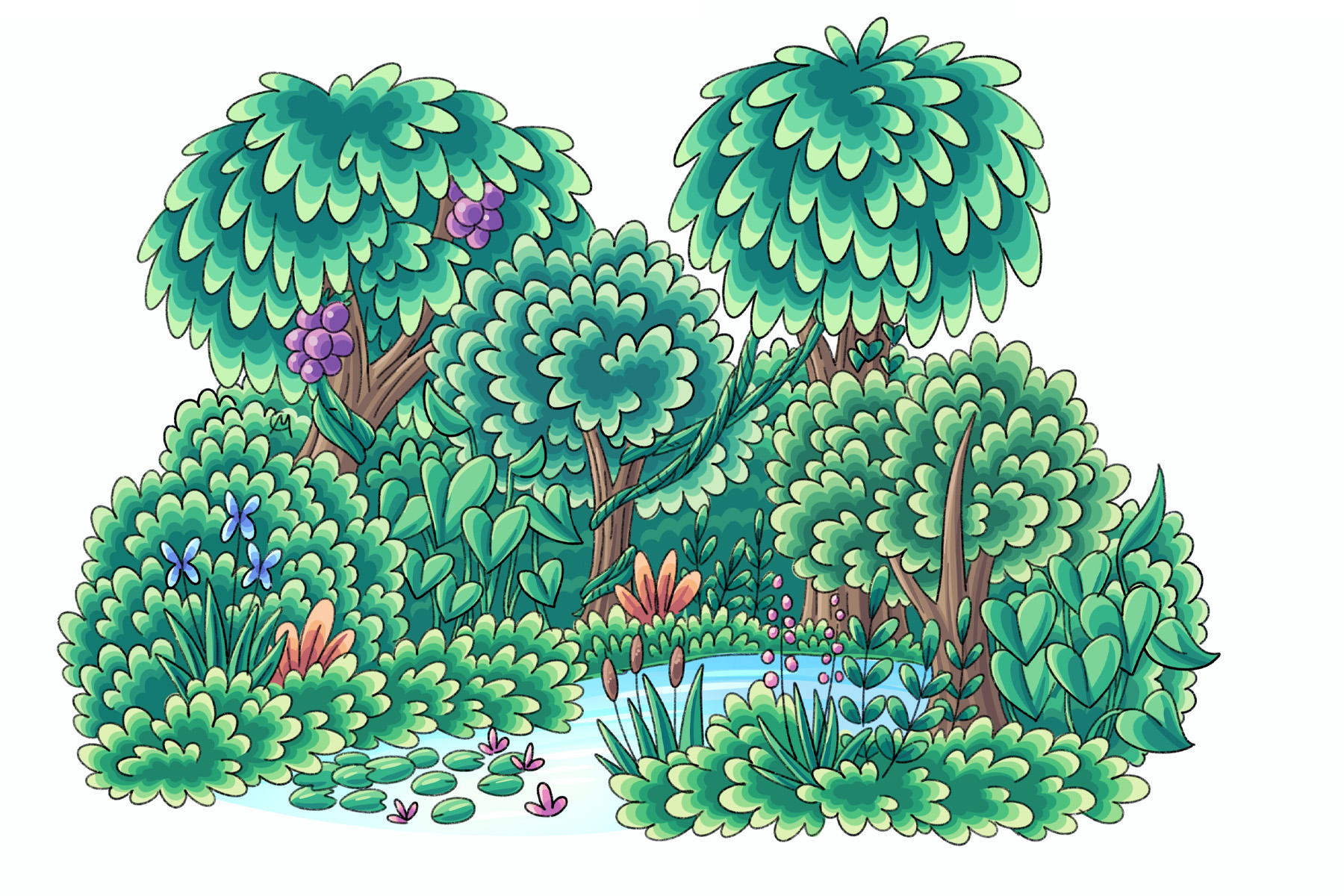 The tropical rainforest is a biome known for its intense and enormous amount of rainfall, dense and layered foliage, and high biodiversity. This biome is highly important for our planet's health as it hosts 50% of species, regulates weather and temperature, and produces oxygen while sucking up carbon dioxide. I took inspiration from a variety of Earth’s rainforest, with running rivers/streams, and diverse, dense, colorful foliage.
The tropical rainforest is a biome known for its intense and enormous amount of rainfall, dense and layered foliage, and high biodiversity. This biome is highly important for our planet's health as it hosts 50% of species, regulates weather and temperature, and produces oxygen while sucking up carbon dioxide. I took inspiration from a variety of Earth’s rainforest, with running rivers/streams, and diverse, dense, colorful foliage.
Temperate Biomes
The temperate zone, located between the tropical and polar zones, receives a variety of sunlight throughout the year which leads to dynamic, seasonal temperature fluctuations. Characterized with distinct seasons, a warm summer, cold winter, and a moderate spring and autumn. Like the tropical zone, precipitation can vary depending on geography, weather, and altitude. Looking at my landscape illustration I’m sure you can tell temperate climates are my favorite out of the three.
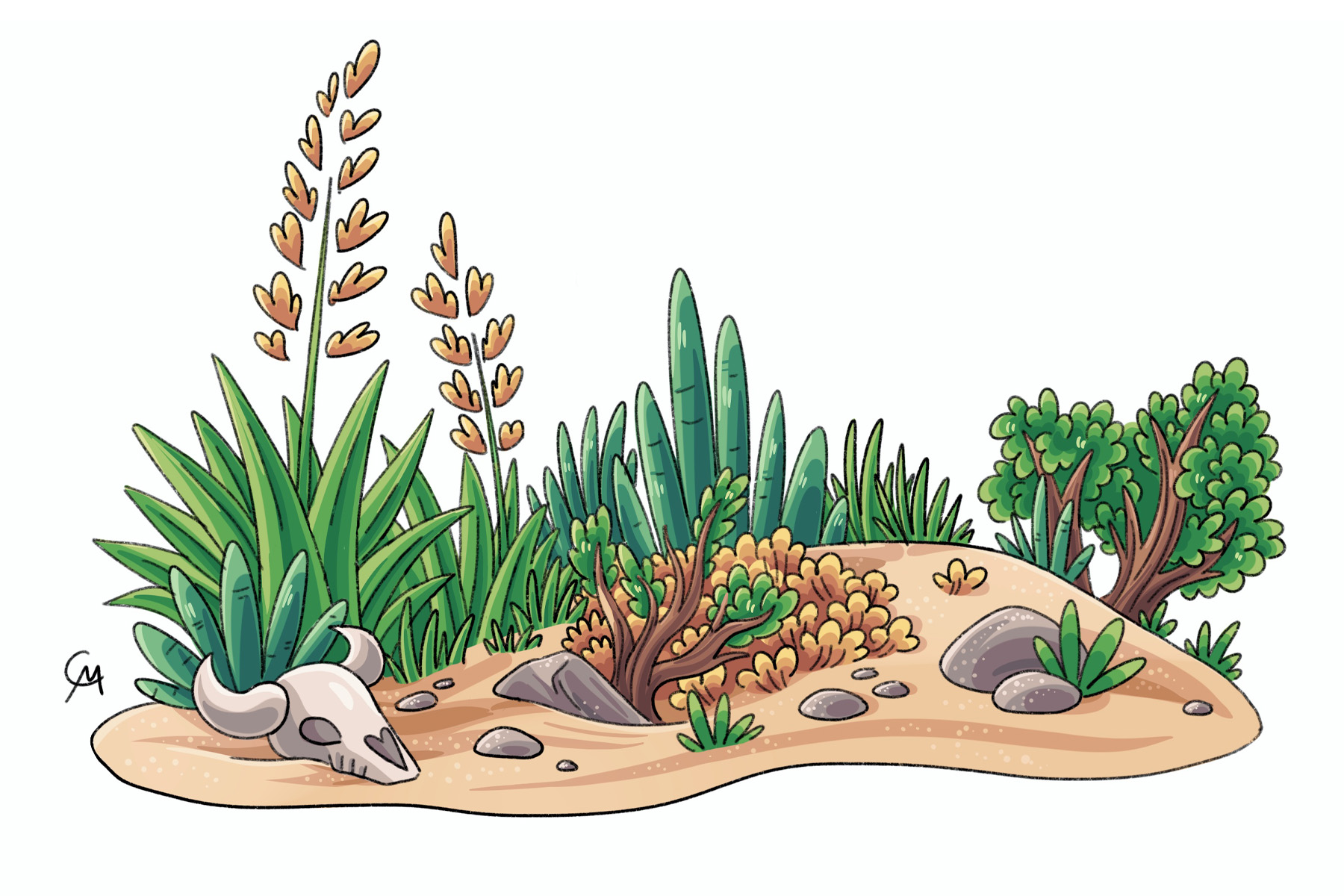 The temperate desert, unlike the tropical desert, experiences extreme temperature fluctuations throughout the year from hot summer/days to cold winters/nights. These deserts are covered in sand, clay, exposed rocks and rock formations, as well short shrubs and dry brush. When I initially illustrated the temperate desert I included a few cactus species, but looking back I ended up getting rid of them and keeping the succulents that do exist within this biome. I took inspiration after the Great Basin in North America which features dry, sparse vegetation, and eroded rock formations. I also added the dry bovidae skull to showcase that this desert may seem more habitable than the Sahara but it's still just as extreme to live in.
The temperate desert, unlike the tropical desert, experiences extreme temperature fluctuations throughout the year from hot summer/days to cold winters/nights. These deserts are covered in sand, clay, exposed rocks and rock formations, as well short shrubs and dry brush. When I initially illustrated the temperate desert I included a few cactus species, but looking back I ended up getting rid of them and keeping the succulents that do exist within this biome. I took inspiration after the Great Basin in North America which features dry, sparse vegetation, and eroded rock formations. I also added the dry bovidae skull to showcase that this desert may seem more habitable than the Sahara but it's still just as extreme to live in.
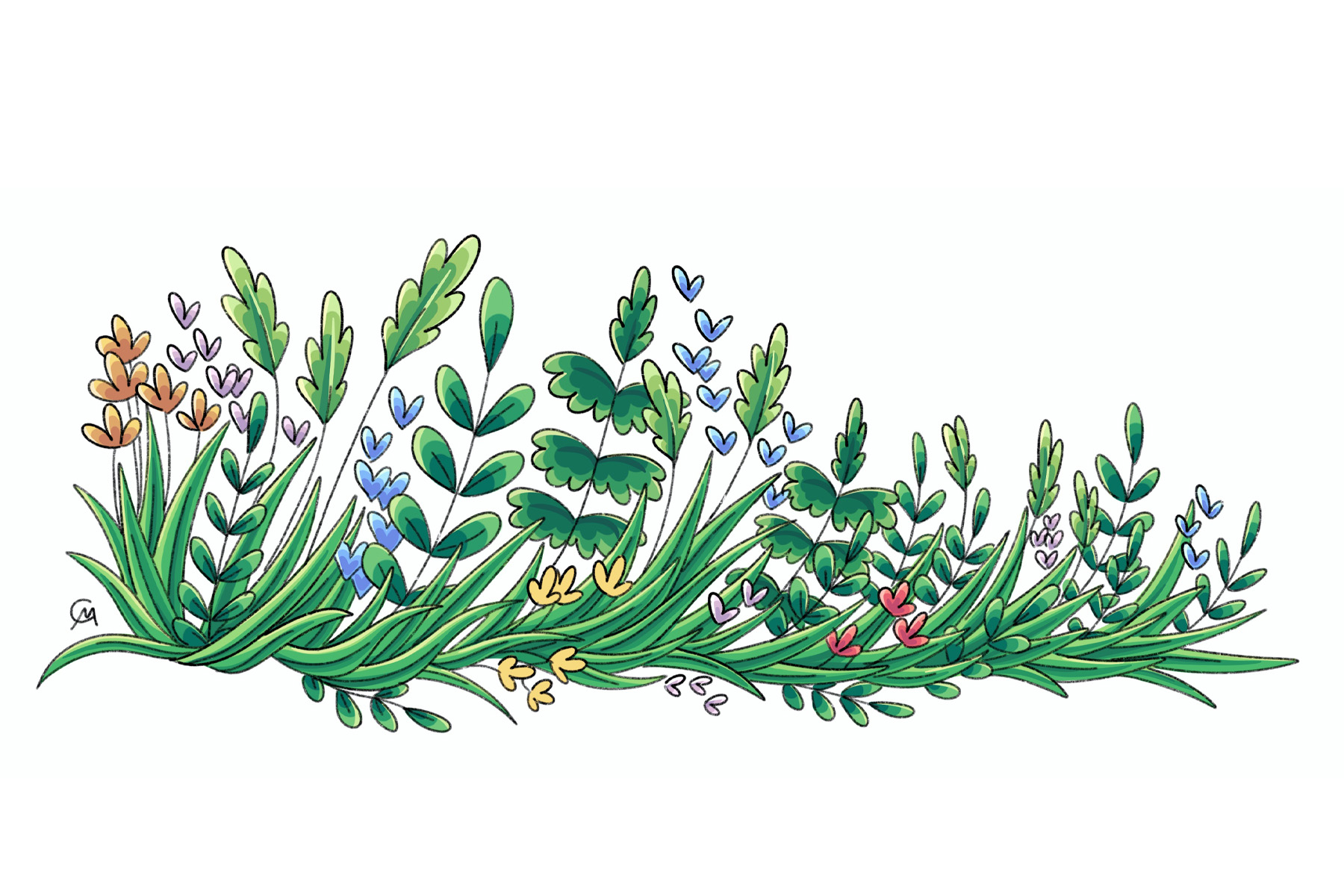 The temperate grassland is a biome, similar to its tropical counterpart, that features vast, sprawling expanses of land filled with grasses, devoid of trees/canopies due to its semi-arid climate which prevents trees from growing efficiently. Unlike its tropical counterpart, the temperature fluctuates throughout the seasons, with harsh winters and hot summers. For inspiration, I looked to the great plains of North America and the steppes of central Asia with a mixture of short and tall grass that show the diversity most simply look over.
The temperate forest is a biome characterized by its four distinct seasons, moderate temperatures which fluctuate in the summer and winter, as well as high rainfall which contributes to the growth and wide range of trees.
The temperate grassland is a biome, similar to its tropical counterpart, that features vast, sprawling expanses of land filled with grasses, devoid of trees/canopies due to its semi-arid climate which prevents trees from growing efficiently. Unlike its tropical counterpart, the temperature fluctuates throughout the seasons, with harsh winters and hot summers. For inspiration, I looked to the great plains of North America and the steppes of central Asia with a mixture of short and tall grass that show the diversity most simply look over.
The temperate forest is a biome characterized by its four distinct seasons, moderate temperatures which fluctuate in the summer and winter, as well as high rainfall which contributes to the growth and wide range of trees.
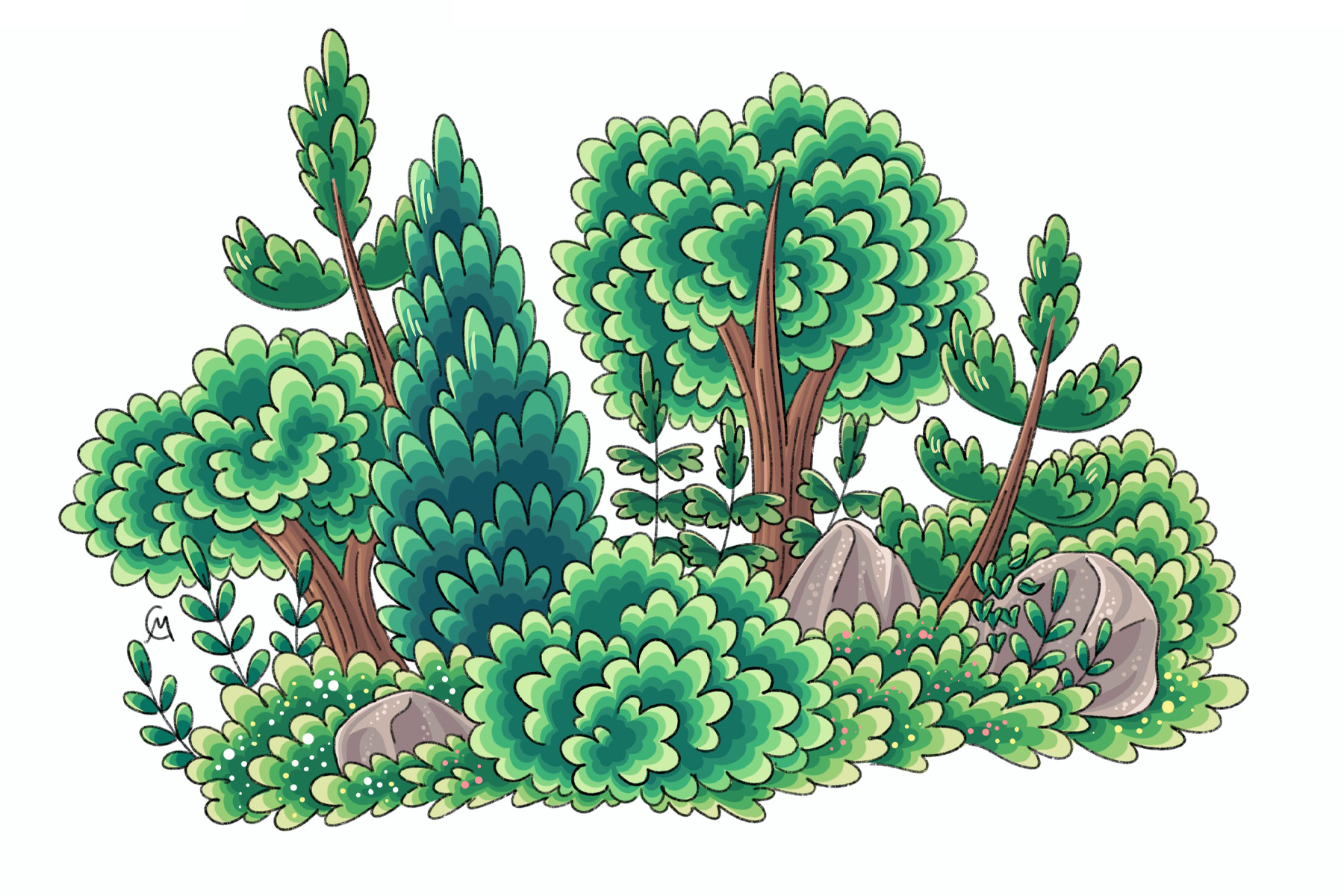 This biome is known for its deciduous trees and forest which blossom in the spring, and showcase a bright colorshow as the leaves begin to fall in autumn. Along with deciduous trees, coniferous trees like pines and firs are also scattered around this biome. Out of all of the biomes, this was the easiest to illustrate as I live in this biome so I’m plenty familiar with its environment. I took inspiration from my own town with its large bushy broadleaf trees, scattered pines, ferns along the forest floor, and overall lush feel.
This biome is known for its deciduous trees and forest which blossom in the spring, and showcase a bright colorshow as the leaves begin to fall in autumn. Along with deciduous trees, coniferous trees like pines and firs are also scattered around this biome. Out of all of the biomes, this was the easiest to illustrate as I live in this biome so I’m plenty familiar with its environment. I took inspiration from my own town with its large bushy broadleaf trees, scattered pines, ferns along the forest floor, and overall lush feel.
Polar Biomes
The polar zone, located above the temperate zone, covering the top and bottom of the planet, receives fluctuating sunlight throughout the year with summer meaning full sun everyday for months, and winter meaning no sun everyday for months. This sunlight fluctuation due to Earth’s tilt has proven to be a barrier to biodiversity as it makes it hard to adapt to such extreme conditions and lower overall temperature. I included the sub-polar taiga in this category despite it not being truly polar like the tundra or ice caps, but it makes discussing this pyramid a little easier and some parts even extend into the arctic circle.
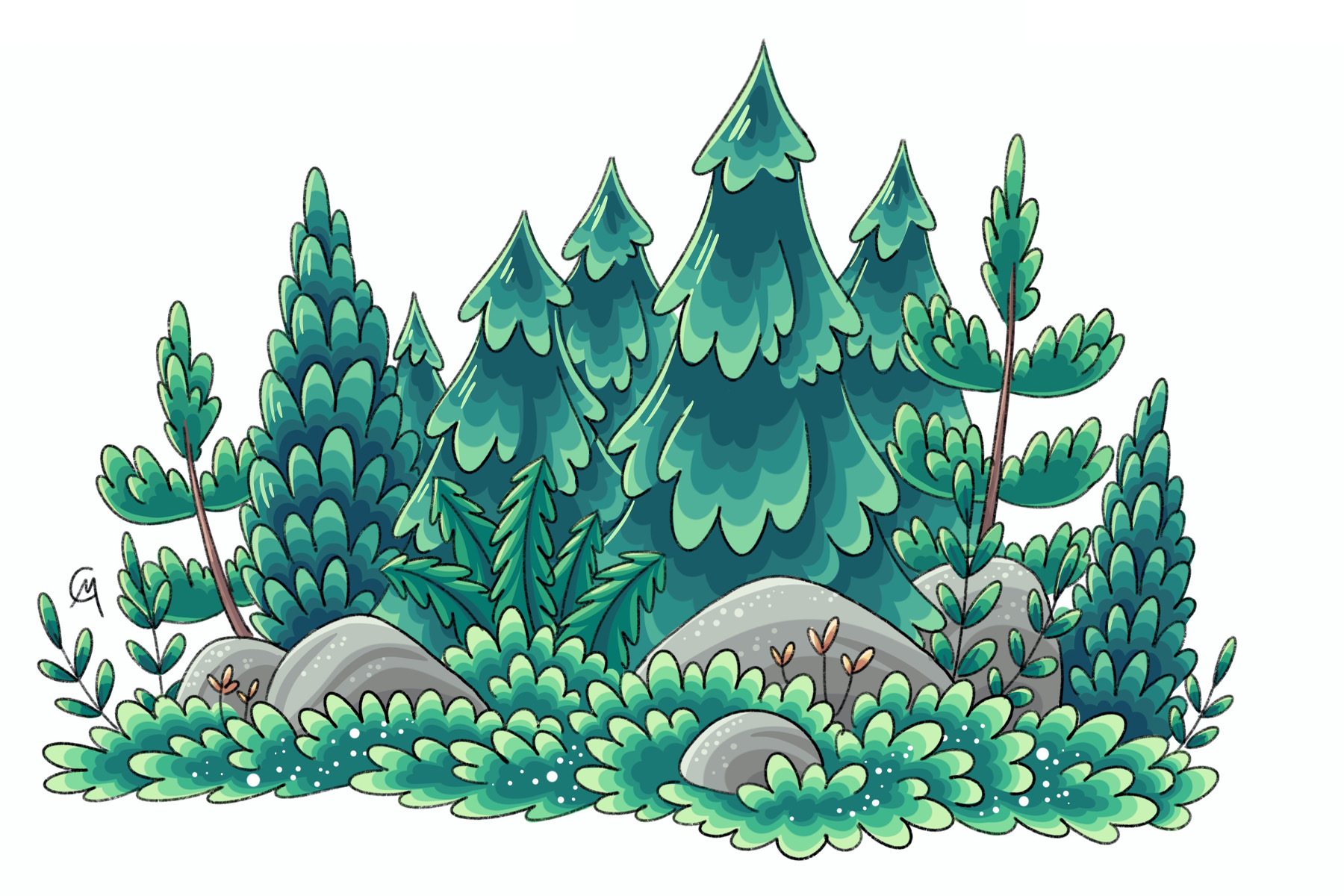 The taiga or Boreal forest is the largest terrestrial biome on the planet, stretching across Northern Canada and Alaska to Siberia and Scandinavia. Developed relatively recently (10,000+ years ago) after the large continental glaciers began to retreat due to a changing climate. This biome experiences a subpolar climate with very long, cold winters, short, warm summers and sparse precipitation primarily in the form of snow and fog. Despite the sparse precipitation, snow remains on the ground most of the year, and the glacial retreat leaves behind scars of scattered lakes and rivers. This biome is characterized by its coniferous forest and trees that make up the bulk of the biomass. For inspiration I looked at the Canadian boreal forests with its coniferous trees, scattered glacial erratics, and short shrubbery.
The taiga or Boreal forest is the largest terrestrial biome on the planet, stretching across Northern Canada and Alaska to Siberia and Scandinavia. Developed relatively recently (10,000+ years ago) after the large continental glaciers began to retreat due to a changing climate. This biome experiences a subpolar climate with very long, cold winters, short, warm summers and sparse precipitation primarily in the form of snow and fog. Despite the sparse precipitation, snow remains on the ground most of the year, and the glacial retreat leaves behind scars of scattered lakes and rivers. This biome is characterized by its coniferous forest and trees that make up the bulk of the biomass. For inspiration I looked at the Canadian boreal forests with its coniferous trees, scattered glacial erratics, and short shrubbery.
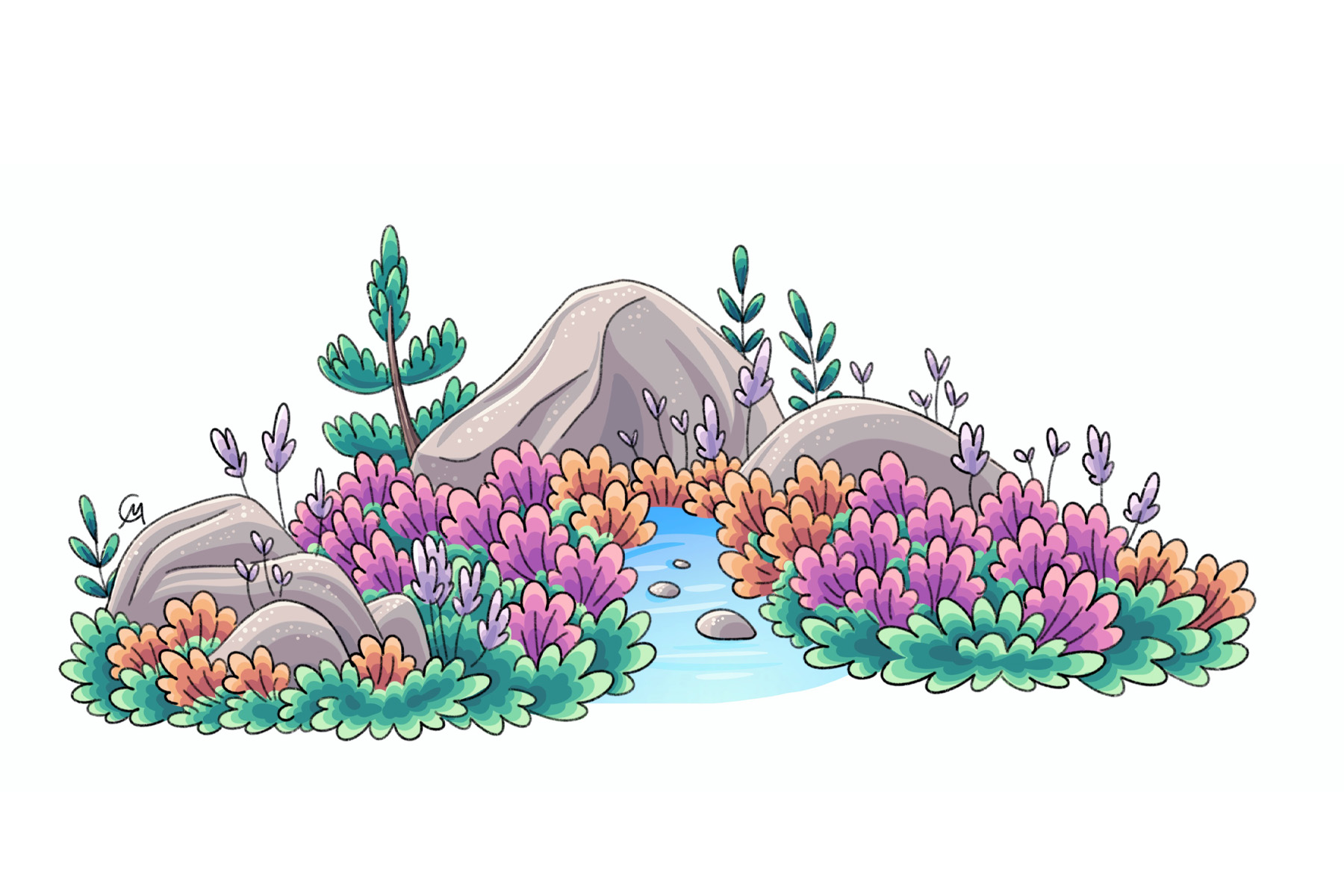 The tundra is a cold and windy biome found in the northern hemisphere around the arctic circle. Characterized by its treeless landscape with short vegetation that can tolerate the extreme cold and permafrost like mosses, lichens, and shrubs. While most think of a desert like the tropical and temperate deserts with sprawling sand dunes, the tundra is a desert as well since it experiences very low precipitation as well as temperature extremes, just in the opposite direction. Despite its extremely cold climate and long winters, there is a short growing season where the landscape springs to life with colors that paint the harsh landscape. This was my inspiration as I’ve always loved the look of the tundra in the summer and didn’t want to cover the underappreciated landscape with snow.
The tundra is a cold and windy biome found in the northern hemisphere around the arctic circle. Characterized by its treeless landscape with short vegetation that can tolerate the extreme cold and permafrost like mosses, lichens, and shrubs. While most think of a desert like the tropical and temperate deserts with sprawling sand dunes, the tundra is a desert as well since it experiences very low precipitation as well as temperature extremes, just in the opposite direction. Despite its extremely cold climate and long winters, there is a short growing season where the landscape springs to life with colors that paint the harsh landscape. This was my inspiration as I’ve always loved the look of the tundra in the summer and didn’t want to cover the underappreciated landscape with snow.
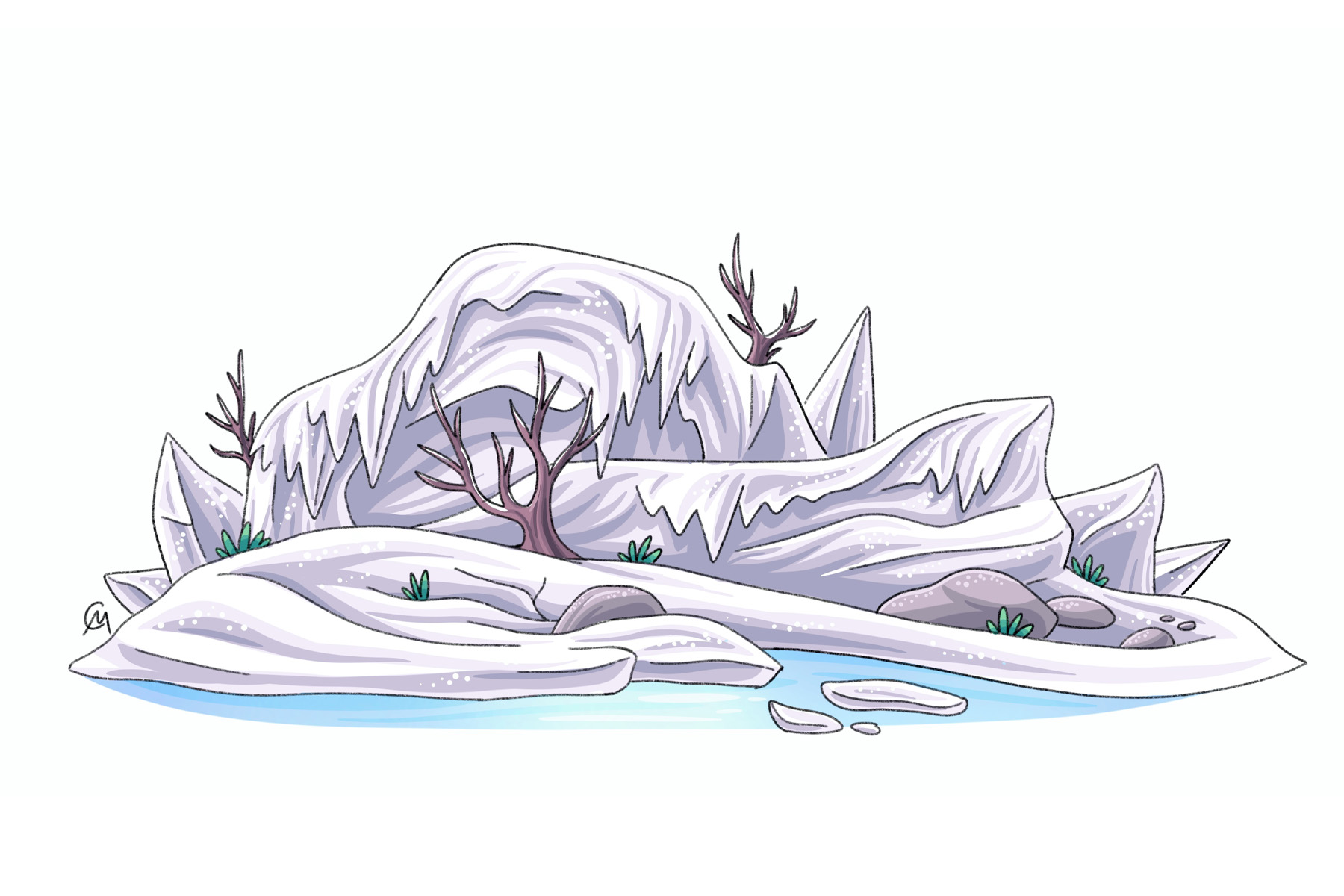 The ice cap is a biome like no other, with a mean temperature no greater than 0ºC (32ºF), permanent ice and snow cover which can slowly create large mile thick ice sheets, with no vegetation. This biome is the very definition of extreme and is only seen at the poles or on top of towering mountain ranges where life struggles to adapt. For this illustration I did keep a little vegetation in the form of dead shrubs/branches to showcase the extreme conditions with the encroaching glacier/ice sheet that suffocate the landscape.
The ice cap is a biome like no other, with a mean temperature no greater than 0ºC (32ºF), permanent ice and snow cover which can slowly create large mile thick ice sheets, with no vegetation. This biome is the very definition of extreme and is only seen at the poles or on top of towering mountain ranges where life struggles to adapt. For this illustration I did keep a little vegetation in the form of dead shrubs/branches to showcase the extreme conditions with the encroaching glacier/ice sheet that suffocate the landscape.